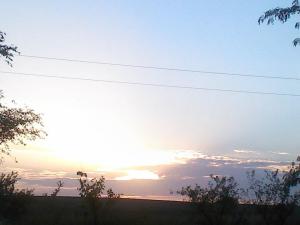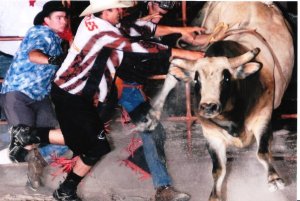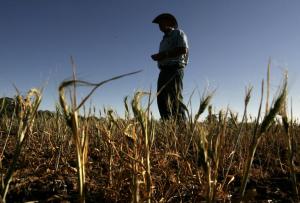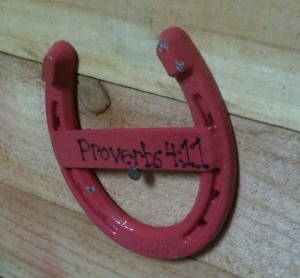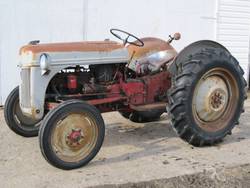 So much can happen as the sun races a quarter of the way across the sky. From dawn to the third hour, so much did change.
So much can happen as the sun races a quarter of the way across the sky. From dawn to the third hour, so much did change.
The crowd, which had worried the chief priests and teachers of the law so much earlier in the week (Luke 22.1-6), were now standing outside of Pilates residence. Before dawn, Jesus was taken there for more questioning. Both Herod and Pilate had their turns at him in the early hours of daylight. The Jewish authorities had decided upon death, but without the authority to carry out their own executions, they needed Pilate to sign off.
Word raced through the city streets of the arrest and Pilates house was in the center of Jerusalem. In a way, Pilate was only there because of the crowd. He usually lived in Caesarea Maritima, the capital of the Judean province. But with the religious festival of Passover upcoming and the increase of people in the city, historically Jerusalem on the holy days was a golden opportunity for uprisings. As an occupying force, thousands of miles from home and in a volatile situation, the Roman army had reason to be weary and Pilate, a reason to be in town.
The Jewish leaders had their own reason to fear a scene. The crowd, just five days prior, bearing palm leaves and throwing down their cloaks, hailed him as a King (Mark 11.1-11). Jesus astride his donkey rode through the lines of the crowd hearing their praise of adoration:
“Hosanna!” — a praise of salvation
“Blessed is the King who comes in the name of the Lord!” (Psalm 118.26 quoted in Mark 11.9-10)
Both are acclimations of the identity and the activity of the King that has come. The highest praise saved for the one deserving. Its fitting really because if you want to find Jesus in the book of Mark, you have to follow the crowd [ochlos]. The paraplegic couldn’t get to Him because of them (Mark 2). He couldn’t preach loud enough to them (Mark 4.1). The crowd pressed him as he traveled (5.24) and tried to speak (3.9). He was teaching the crowd, feeding the crowd (Mark 6.34; 8.1), and healing in front of the crowd (9.25). Everywhere he went, the crowd ran to meet him (9.15). Jesus even let them in on the whole plan when he told the crowd what was going to happen to him (8.34).
If you want to find Jesus in Mark, look for the crowd. The crowd [ochlos] found him at night and arrested him (Mark 14.43). There was a crowd that hailed him as king, then a crowd who arrested him, and now the crowd is in front of Pilate. They asked Pilate to release a prisoner (Mark 15.8) as was the custom. Stirring up the crowd was the chief priests asking for the release of Barabbas (Mark 15.11). It’s fascinating that the greek word for ‘stirred up’ [anaseio] in Mark 15.11, is the same charge the chief priests accused Jesus of doing with his teaching when they went to Pilate (Luke 23.5).
Pilate’s next question elicited a response far removed from Sunday’s Triumphal Entry.
“What shall I do, then with the one you call the king of the Jews?” Pilate asked the crowd.
“Crucify him!” the crowd shouted. (Mark 15.13)
Wanting to satisfy the crowd, Pilate…handed him over to be crucified. (Mark 15.15)
From there it went so fast: the beating, flogging, mocking, and procession to Golgatha.
The crowd is fickle: from a victors parade to a death row walk. The crowd had turned over five days. As I ponder their change of heart, the quickness of their desertion, and the strength (or lack there) of their resolve, I realize that my own devotion is far more vacillating than theirs. With every act of obedience, faith, and trust I shout “Hosanna, Hail to the King” but with every thought of lust, falsehood of the tongue, lack of compassion, or hateful thought towards my brother I shout “Crucify Him! Crucify Him!” With every act of denying my self, taking up my cross, and following in his steps I proclaim “Hosanna, Blessed is he that comes in the name of the Lord.” And a split second later, I refuse to trust, envy another, gossip about a friend, or profane God and I cry out alongside the crowd: “Crucify Him! Crucify Him!”
As Pilate scanned the crowd during those early morning hours between sunrise and 9, he saw many faces chanting in unison “Crucify!”. Two thousand years later, as I scan the text, I am catch my own face in the crowd; out of my mouth come the words “Crucify Him!”. Crowds are made up of many individuals. It just so happens that that crowd was made up of individuals like me.
“It was the third hour when they crucified him.” (Mark 15.25)

